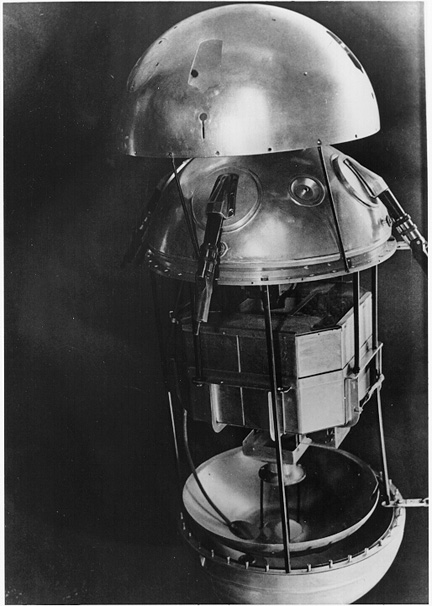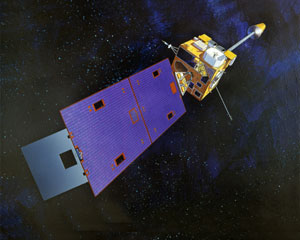The History of Satellite Monitoring and Satellite Hacking - Part 1
The Early Beginnings
V. 1.0 - 21.02.2003
V. 1.1 - 05.10.2004
V. 1.2 - 10.06.2008
Copyright (C) 02/2003 by Howard Fuhs
After that brief and not necessarily academic definition of a Hacker I would like to give a brief introduction into the history of Satellite Monitoring and Satellite Hacking. This short excursion into history is absolutely neccessary for the reader to understand the technological as well as political roots and backgrounds of Satellite Monitoring and Satellite Hacking. As the beginnings of Satellite Monitoring are located in the 1950’s it is very difficult to give exact dates as most things are only briefly documented or not at all.
As some might expect everything started with the first man-made satellite to circle the globe, the russian Sputnik 1. The satellite was launched 4. October 1957 and had the shape of a sphere with a diameter of 58cm and a weight of 83,6kg. Sputnik 1 was equipped with four antennas which allowed him to send telemetry data on the frequencies 20,005MHz and 40,002MHz. The telemetry signals ceased at the 27. October 1957 as the satellite batteries became empty. The first satellites were not equipped with solar cells for recharging the batteries during the flight in the daylight zone. After 92 days in orbit Sputnik 1 decayed 4. January 1958 in the earth atmosphere.

Figure: Sputnik I (Picture courtesy provided by NASA)
This first launch of an artificial satellite made the news around the world and finally led to the race to the moon between the USSR and the USA. Beside the legitimate users HAM radio amateurs who were able to tune their receivers outside the HAM bands (frequencies) to receive 20 and 40MHz tried to catch the Sputnik 1 broadcast with success. These people around the world were the first private Satellite Monitoring people. What sounds like a piece of cake today was back then a real technological challenge for the radio amateurs as pret-a-porter (out-of-the-shelf) receivers and antennas where not available to private persons for monetary reasons. Nobody could afford to buy professional equipment. I personally had the opportunity to meet one of these people, a german radio amateur, in the early 80’s who chased the Sputnik 1 and attempted to receive the signal as often as possible. He showed me his homemade reciever he had built just for receiving the Sputnik 1 signal on 20MHz.

Figure: Sputnik I reveals its inner secrets. (Picture courtesy provided by NASA)
It can be said that back in the 50’s and 60’s only radio amateurs were trying to catch up a satellite signal but there was no regular and constant monitoring. The focus of the radio amateurs shifted completely when in the early 60’s the first radio amateur satellite was launched, Oscar 1. From this moment on the radio amateurs were the first and only worldwide hobbyist group which had their own satellites for their exclusive use, build and controlled by themself, launched by the NASA (later also by other agencies and nation states).
Being the first hobbyist group with their own satellite(s) as far as it can be said today, none of the radio amateurs was listening to other satellites than amateur satellites. Despite this fact a lot of knowledge was gaind by the HAM community regarding not only building a satellite but also controlling the satellite once in his plane around the earth, receiving and decoding his telemetry and finaly also to transmit over the satellite, using the satellite as relay station for QSO’s. This knowledge was regulary published in radio amateur magazines around the world and distrubuted to other radio amateurs.
Another boost to private Satellite Monitoring was ignited with the launch of weather satellites, broadcasting their picture transmissions between 136 MHz and 137 MHz. This frequency band was relatively easy to receive as the frequency itself was below the radio amateur 2m band (145MHz) and receivers could be built without expensive or specialized components or special knowledge necessary in the GHz bands. Everybody who was technically able to build a 2 m transciever was also able to build a 137 MHz receiver for weather satellites. Once again radio amateurs were the first hobbyists who not only received the signal but also designed hardware to decode the signal into a picture. I cannot give a specific year for the first private reception but I came across this technology in the 70’s so it is pretty sure to asume that the possibility of receiving and decoding weather satellite signals were achieved by the radio amateurs in the late 60’s.

Figure: GOES Environmental Satellite (Graphic courtesy provided by NOAA)
The reason why radio amateurs were the first hobbyists listening to satellite signals and having their own satellites can be derived from the fact that e.g. most NASA technicians and engineers were also licensed radio amateurs. This fact was giving them access to the neccessary informations to accomplish monitoring tasks (back then, no Internet for information research and retrival was available!).
Beside the group of radio amateurs there was no indication found of any other private or hobbyist group involved into Satellite Monitoring from the 50’s until the mid 70’s.
I invite your suggestions for revising this document. I plan to review and revise this document as the need arises.
Copyright (C) 02/2003 by Howard Fuhs
All Rights Reserved!